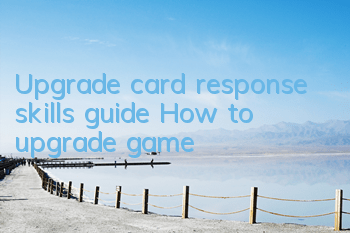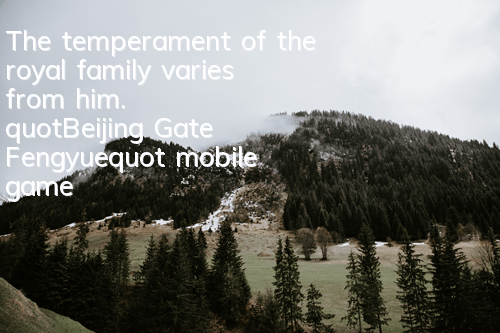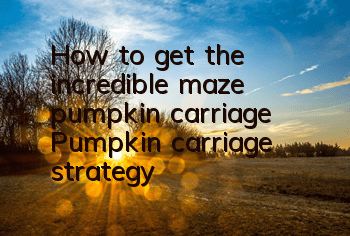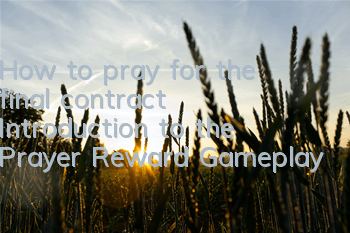In the upgrade game, you must not only know how to play cards, but of course you must also know how to respond! Then what the editor will bring to you next is the upgraded card-responsive skills guide! Want to know how to upgrade the game to answer cards? If you want to know, come and have a look!
Upgrade card response skills
Respond card skills (I)
Respond card means big cards, which is equivalent to reflecting the big cards in your hands to your opponent. Before I tell you the skills of the cards, I want to ask those members who need to learn to pay attention to it. When answering cards, you must ensure that the cards in your hands are the largest. Of course, if the enemy is gone, there is no way, the same is true. If you are a perfect player, you can also tell the opponent with the card. There are two types of things that everyone often uses for the cards, so I will write down the most basic one. The first one is that when you play A on the opponent, you have A on your hand, then you play 8, 9, J, and Q. The second type is that when you play against the opponent and you don’t have A but only 8, 9, J, Q or you have A, but you want to run points, then you will play slowly. Usually, you will play cards after 18 seconds. In addition, if you don’t have 8, 9, J, Q in your hands, you can also play this way. Remember, everything can only be based on the corresponding cards. Don’t consider the cards played by the enemy, because if the enemy is also a player, it may play some misleading cards.
Card-responding skills (II)
1. The banker has A, which corresponds to the family 8, 9, J, and Q, which means that the family has A (or the only largest card) or the door is broken. If you don’t have A but only have 8 or more cards in your hand, you must slow it (it is recommended to slow it down for 20 seconds).
2. The banker has A. A card other than 8, 9, J, and Q includes a card, indicating that A or the deceased card is broken.
3. The Lord responds to the king. When hanging the master (regardless of who lifts it), any card is slowly played, indicating that there is a king or the biggest card. This includes the hanging pair, which can also be used to indicate that there is a big brand response by slowing out.
4. How do you respond if someone finds out that I just broke the door? ——In order to confuse the enemy, the correct way to respond should be to say that the cards are left in your hand are gone, and the quicker one means that there is still some. Example: If the opponent makes a red card, you have 4 cards in total, 6, 10, J, Q, and you should get 10, J, and Q, so if the dealer also has a red card, but the enemy thinks you have no more, you can find an opportunity to drop that card.
5. The gate should be marked. Example: You have a black 789 and a red J in your hand. 4 photos of the family's red QQKK. If you slowly show red J and black 789, it means black break. 6. Take the card first with time. Here is an alternative usage of time cards. As mentioned earlier, the time-responsive cards are always slow to play, which means that the player is not the first to play. The slow move first means that the game will play for more than 20 seconds after the previous hand is big (it is recommended here that the slower the better), which means that the game has been broken. This kind of card is rarely used, only when it is agreed to use it when playing a master's competition.
How to goThere are 148 cards in total when playing one of the upgrades (two decks), and each person has 25 cards in his hand (the dealer has 8 more cards). From a global perspective, it is divided into three ways of playing (every deck I mentioned). One is: sitting in the dealer; the second is: helping the dealer; and the third is: attacking the dealer. Although it is a matter of pairs of cooperation, each company must consider the cards of the other three companies (the level of the master is also determined by the ability to analyze the cards). Some people may say that as long as you know how to answer the cards, you can analyze it. This statement is wrong. I have two questions here. If your enemy company does not know how to answer the cards, then how do you judge where the big card is when they are in the banker? 2. How do you play cards when you can’t answer cards yet? Signal cards are just one-hand tricks. A real master must remember and count cards, think about what the cards played by others mean and why he plays cards like this. This method is called reverse thinking, which means putting himself in the position of others to think.
Let’s talk about the dealer first: the dealer has 8 more trump cards than the idle player and has the right to start, which can be said to be the most important role. 1. The dealer's first step is to lower the bottom. It is said that the bottom score is doubled. The card type in your hand directly affects whether the bottom score is given (don't tell me that it is not easy to lower the bottom. If you are good, just lower it, otherwise you won't. If you say this, I will be shocked.) The bottom score is a burden. If you have a bottom score, you must worry about the issue of guaranteed bottom. You may not dare to kill the opponent on the card. This is the most painful time when you think about the big and small cards. When I play cards, I pay great attention to the sense of cards. It can also be said that when I get the cards, I analyze how to close the cards. The scores that may be left to the enemy's family are calculated when I get the cards, and the error in my calculation is very small, but this requires continuous accumulation of experience to achieve it. It can only be understood, not written by words. Simply put, as long as you think there is a little bit of a bottom, don’t go down the score. It should also be noted that if you decide to make a card, don’t go to the small pairs, so that you can run the score when the match is given (of course, it’s best to go down the bottom, especially if there is no time in the door)
2. Then it’s playing cards, there are only three ways to play cards: one is to drop the main; the second is to get an A; and the third is to get a right. There are three situations for losing the master: one is that there is no big card in your hand; the second is that you want other people to leave A and lose all the cards; the third is that the cards are good, but you need to run to the little master. In short, when the dealer starts to lose the owner, the dealer must use his biggest owner to help the dealer, and must not be lucky. When you go out, you want to see the card types of the other three companies and whether there are big cards (I have already explained all the tricks and some precautions for cards in the previous articles. If you don’t understand, you can check it out). When you go out, you usually go out from less to more, which can make your chess and card games judge your best. There is nothing to say when it comes right. It should be noted that if you get right, you must be absolutely sure (if there are two pairs, you must first judge how certain the big pair is. If you are not sure, don’t stay with the double pair). After the first round of cards, basically the four cards have a rough outline. Just choose the most beneficial way to play from this outline (being able to control cards is the most beneficial to play.Law).
The above is the full introduction of the upgraded card application skills and strategies brought to you by the editor. I wonder if you have learned it? Finally, if you want to know more relevant strategies for upgrading the game, then search for it on 87G mobile game website!
Upgrade strategy
Upgrade rules and upgrade gameplay upgrade skills card control skills banker play helper play method and yesteryear play method card calculation skills card calculation skills are called main skills








